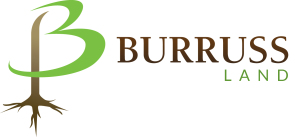
City of Lynchburg
What defines any metropolitan area is its city. For American cities, Lynchburg is a grand old dame. Its history began on the banks of the James River when John Lynch started a ferry to improve trade. In 1786 John was given a charter by the General Assembly of Virginia to create the town of Lynchburg. By the late-1800s its inhabitants had the second highest income per person in the country - Greenwich, CT was first. Through annexation its size has grown to 49-sqare miles and 68,000 residents.
Lynchburg epitomizes the natural beauty of its region. Early architects revolutionized their designs of early Tidewater Virginia -flat land - for the hilly topography of this area. They designed homes and churches on its seven hills that accentuate the town’s natural beauty. Since the Lynchburg Bicentennial of 1986 a great deal of effort has been placed on preservation and redevelopment of this area. George Stewart, president of First Colony Insurance – now Genworth Financiall, made a bold business move enlarging its downtown corporate headquarters and personally investing in historic homes he wanted saved. The Lynchburg Historical Foundation, spurred by the 1976 US Bicentennial, found increased interest with young homeowners wanting to restore houses. A 1986 Lynchburg Bicentennial Preservation Committee was also created to evaluate the long term redevelopment of early-Lynchburg. Several developments came because of a redevelopment plan created by architect Hal Craddock: Amazement Sqaure Children's Museum, Riverview's Artspace, James River Fountain, and the Craddock Terry Hotel. After thirty years of community work, Lynchburg was awarded the 2006 Great American Street Award by the National Trust for Historic Preservation
Thomas Jefferson once boasted to a friend in England, Our own country. . . is made on an improved plan. Europe is a first idea, a crude production, before the [M]aker knew his trade. - He was talking about the landscape of Virginia Americans are fortunate to have earth’s elderly formations on the east coast and our energetic childlike creation on our west. Jefferson had the ability to describe and envision our landscape, but local citizens have transformed his vision into the beauty early-Virginians felt. Several environmental awards have been given to local groups. In 2006 The Tree Stewards of Greater Lynchburg were given the Gold Leaf Award from the International Society of Arboriculture for Outstanding Landscape Beautification Activities and in 1999 the Virginia Association of Soil and Water Conservation Districts awarded them the Urban Forestry Award for Outstanding Conservation Accomplishments in the Areas of Arboreal and Horticultural Resources. For twenty-five years Lynchburg has received the Tree City USA designation from the National Arbor Day Foundation. LEAF, Lynchburg Expressway Appearance Fund, has won local, state, and international awards including: Keep America Beautiful, Garden Club of Virginia, Virginia Region 2000 Business Award, International Society of Arboriculture Gold Leaf Award, and National Arbor Day Foundation’s Lady Bird Johnson Award. Because treescapes have become a major investment within out community, caring for them is specialized. The Lynchburg Virginia Department of Transportation District has been a leader in the care of its trees and won the 2003 & 2004 Scenic Virginia Award for Best Implementation of Tree Trimming.
Did you know that there is one common ingredient for promoting eating and exercise? It is presentation. People are more likely to try new things if it is presented in an appealing manner. In 2006 Rails-to-Trails chose Blackwater Creek Bike and Walking Trail as one of five trails to participate in the Dasani Blue Bikes Program. Its 9-mile path meanders along Blackwater Creek, through a tunnel, into historic Lynchburg, crosses the James River, and ends in Amherst County giving local citizens the opportunity to work out in a natural gym. Talks are underway to attempt to extend this rout to the James River State Park in Buckingham County and possibly to Richmond. Along Candler’s Mountain boarder lays the 5000-acre Liberty University. Started with a vision, it is now known as the fastest growing Christian college in the nation. Its setting offers a great opportunity to combine God’s creation with a setting of over 30-miles of hiking and bike trails. Current plans are to make the mountains a showcase for mountain biking, hiking, and prayer.
Lynchburg is lucky to have three more colleges, Randolph College, Lynchburg College, and Central Virginia Community College.
Lynchburg has a large variety of local and nationally run restaurants. Many feel that you haven’t eaten in Lynchburg until you’ve eaten “a bowl” (chili) and a “Cheesy Western all the
way” at the downtown Texas Tavern, “T Room.” Downtown has a great mix onts: DISH, Kegney Brothers Pub, Depot Grill, Main Street Eatery, Shoemaker's. A local favorite for Randolph College and Rivermont Avenue residents is The Cavalier. Located along Boonsboro Road you will find Milano's, Mi Patron, and Isabella's. Near Lynchburg College there are King's Island, Isabella's, Monte Carlo, Blue Orchid and Lola's. Within the Fort Avenue, Liberty University area you will find most of the major shopping centers, national restaurant chains, Milan Indian Restaurant – great buffet and their food ranks with the larger cities. La Caretta (Mexican) started here and now has several newer locations. Finally, the Timberlake area where there are three distinct restaurants: Weenie Stand #2 - one of the last counter dinners and known for a great hotdog, West End Deli – known for its great array of sandwiches, and The Crown Sterling – with over forty years of experience it still has the best ribeye in town.
.

